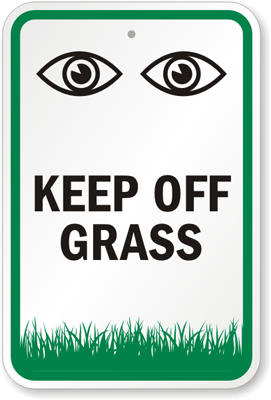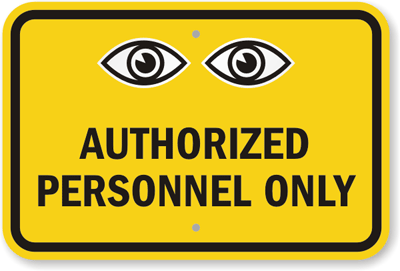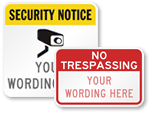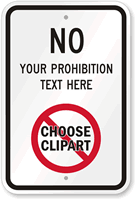Want your sign obeyed? Add an image of eyes, studies say

Research shows that signs that feature eyes improve compliance, by as much as two-fold. View this sign here.
In crime-ridden New York, Jane Jacobs, a journalist and author, described an idea called “eyes on the street” in her book The Death and Life of Great American Cities. The book is still widely influential in urban planning circles. The concept later came to be called “natural surveillance,” and is widely applied by city planners and police in preventing crime.
The idea behind eyes on the street is that the streets are safer when people are on them, watching. A desolate street is a more dangerous place. Crimes are less likely to happen when pedestrians feel safe to walk the streets, landscaping hedges or property walls are low to make the streets visible from inside homes, and there are few places from which to lurk or hide (like behind the pillars holding up highway flyovers). Would-be criminals and miscreants can — and do — assess urban spaces, and if they think people can see them mug or assault a person, they don’t do it. The streets are safer.
But a study by Swiss academics suggests that the watching eyes may not have to be biological eyes connected via the optic nerve to a brain judging one’s actions.
An experiment run in a bus stop in Geneva compared the effects of a no-littering with pictures of flowers against a sign with a pair of graphic eyes. When the watching signs were up, people spent more time voluntarily cleaning up litter off the seat of a bus stop — even though the crumpled newspapers and empty plastic bottles weren’t theirs to begin with. The presence of a pair of graphic eyes seemed enough to remind them that someone could be watching them ignore the litter or brush it to the ground.
It’s not just the Swiss who respond to graphic signs of watching eyes. A similar study in 2011 by Newcastle University in England found a similar positive effect with a no-littering sign featuring a pair of eyes on the tidiness of a university cafeteria — they found a reduction by half of littering. It seems that even rowdy college students are more likely to behave with this subtle, quirky reminder that someone is watching them.

The psychological effect of eyes on signs improves community-minded behavior and compliance. View this sign here.
What’s more, the effect of the eye images was the same whether the accompanying text explicitly sent a no-littering message, or if the message was entirely unrelated. This led the scientists to conclude that the eyes’ effect wasn’t based on drawing attention to the verbal cues, but the image of eyes on their own elicited increased cooperative human behavior. They also found that the effects of the eye images were higher when there were fewer people in the cafeteria than when the cafeteria was full. In terms of regulating human behavior, the drawn eyes replaced the influence of real eyes.
In previous studies by the Newcastle University team, they found that images of eyes also made people behave more cooperatively in economic games, and made people more likely to put money into an “honesty box” set out to collect money for milk and coffee in an office break room.
The study’s powerful conclusion is that the effect of eye images has wide potential applications in the real world, especially when the behavior you’re trying to evoke is for the common good — a pair of eyes will go a long way in public spaces.
We’ve known for a long time that being watched is enough to make people act like better people. It turns out that recreating that feeling of being watched can be done with something as simple as a pair of drawn eyes.

Check out our full range of stock signs with eyes here, or customize your own.
Category: New Products, Surveillance, Trespassing

















